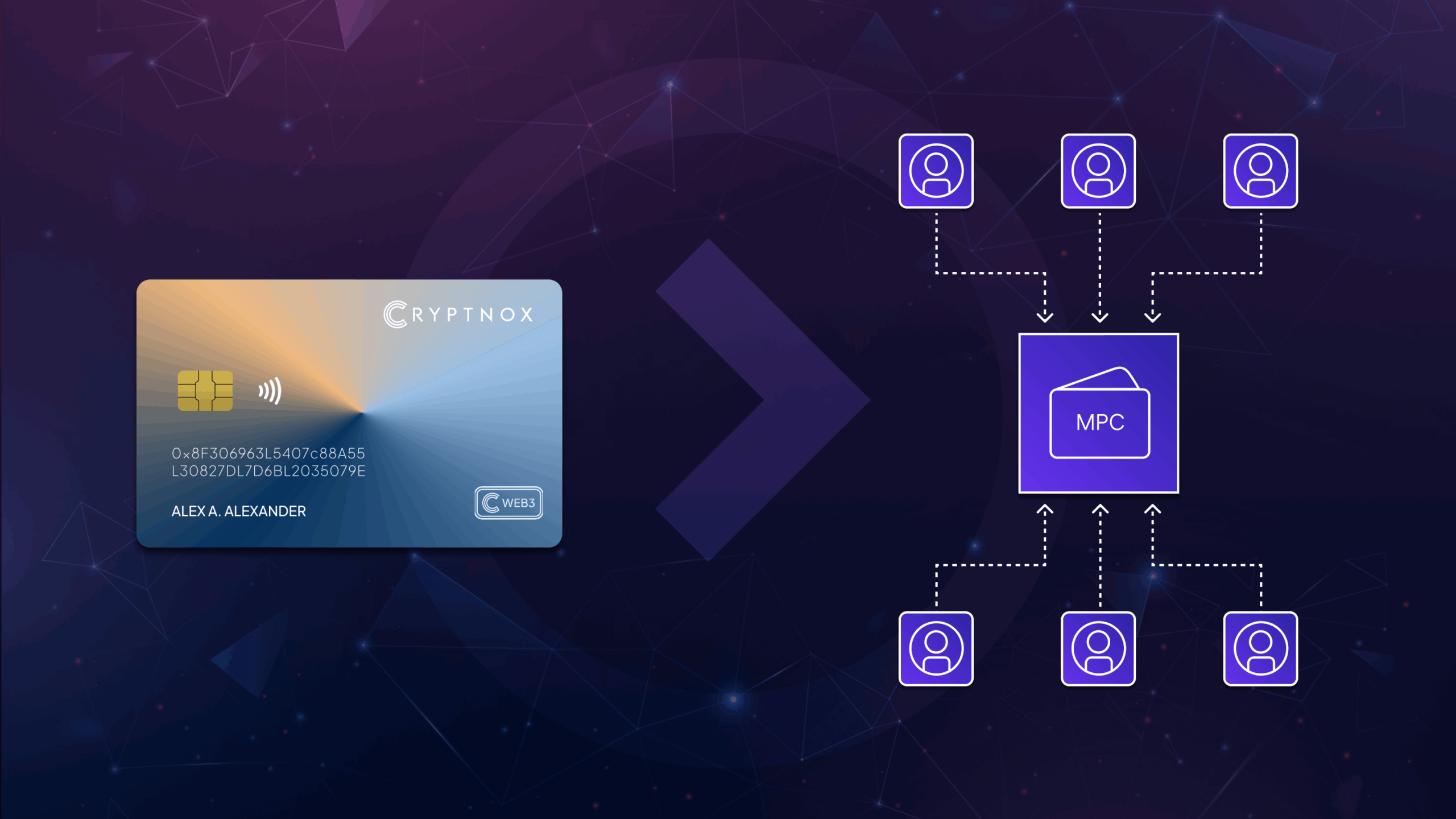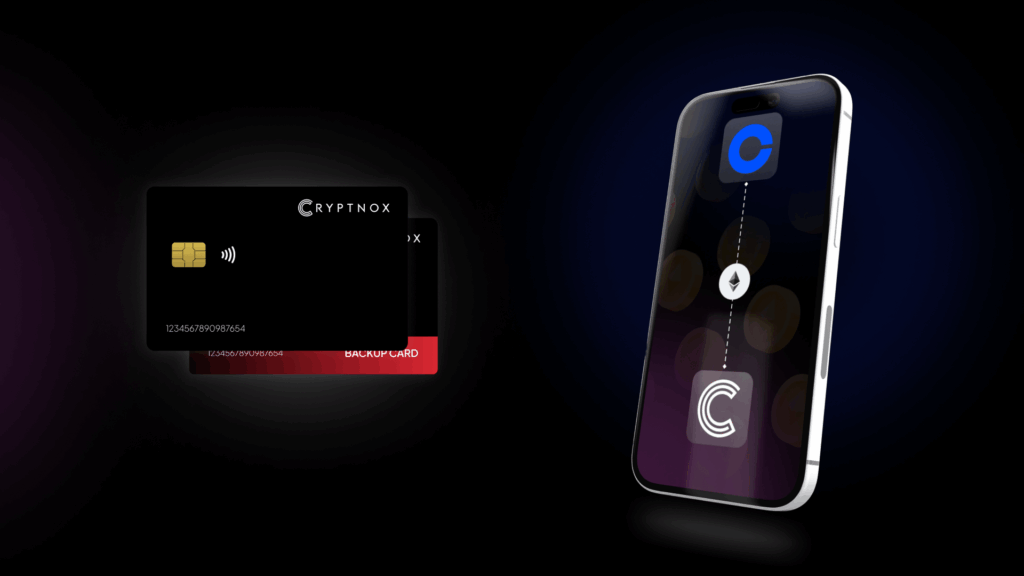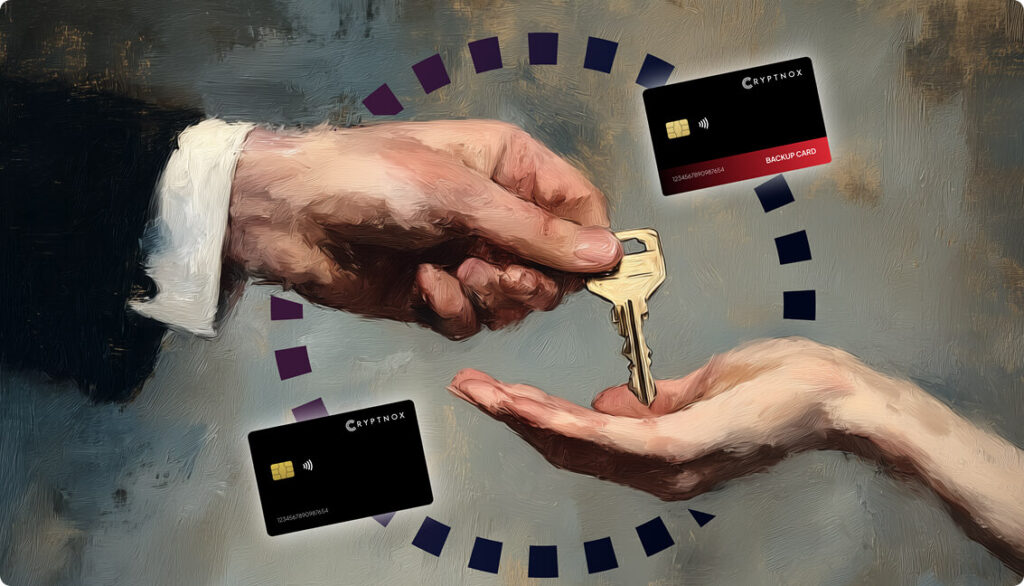The security of digital assets is one of the biggest challenges in today’s financial landscape. Every day, billions of dollars move across blockchain networks, and both individuals and institutions are asking the same question: how can I secure my private keys against theft, loss, or misuse?
Two popular answers are MPC (Multi-Party Computation) wallets and Cryptnox C-WAAS (Card-Wallet-as-a-Service). While MPC has advanced the conversation around decentralized key management, it still carries structural risks. Cryptnox C-WAAS, by contrast, offers a simpler, stronger, and more auditable model: a certified hardware wallet architecture that institutions can deploy at scale.
Understanding MPC Wallets
MPC wallets break a private key into cryptographic “shares,” distributed across multiple devices or custodians. A transaction is signed collaboratively without ever reconstructing the full key in one place.
Advantages of MPC wallets:
-
- Risk is spread across multiple parties or devices
- Useful for institutional collaboration and policy enforcement
- Eliminates direct exposure of a full private key
But MPC wallets also have limitations:
-
-
Online dependence: shares must communicate via networked devices, which expands the attack surface
-
Complex cryptography: difficult to audit, hard to maintain, and still relatively new compared to established standards
-
No physical protection: the system is purely digital—if a device is compromised or policies are misconfigured, the protection weakens
-
Infrastructure reliance: many MPC solutions require centralized servers, third-party custody, or specialized orchestration layers
-
What Is Cryptnox C-WAAS?
Cryptnox C-WAAS is a hardware-backed wallet infrastructure. Instead of splitting keys across multiple online shares, C-WAAS secures the entire private key inside a tamper-resistant secure element (SE) embedded in a smartcard.
Key characteristics:
-
-
- Keys never leave the secure element
- Signatures happen entirely inside certified hardware (CC EAL6+)
- Cards are offline by default and only activated when physically presented
- Institutions can issue branded, recoverable, and user-controlled hardware wallets at scale
-
In other words: C-WAAS takes the security assumptions out of math and into proven, certifiable hardware.
Why C-WAAS Is Safer Than MPC-
True offline protection : MPC requires online interaction between devices; C-WAAS keeps keys permanently offline in hardware, eliminating network attack vectors.
Physical tamper resistance : Secure elements are designed to withstand invasive attacks. Even if a card is stolen, extracting the key is virtually impossible. MPC relies only on cryptographic hardness, not physical security.
User control and autonomy : With C-WAAS, keys remain in the user’s or institution’s possession—no reliance on third-party servers or opaque orchestration layers.
Simplicity and auditability : Hardware security modules and secure elements are standardized, widely audited, and proven. MPC protocols, while elegant, are complex and difficult to independently verify.
No hidden single point of failure : MPC mitigates key loss by splitting shares, but those shares still depend on coordinated digital infrastructure. C-WAAS achieves resilience through physical distribution of cards combined with certified tamper-resistance.
Why C-WAAS Is More Advanced
Enterprise scalability : Institutions can issue thousands of branded wallets, manage permissions, and integrate directly into financial applications.
Frictionless user experience : To sign, users simply tap or insert their card. No need for complex orchestration, network coordination, or policy scripting.
Future-proof certifications : C-WAAS relies on hardware certified to the highest global security standards (Common Criteria EAL6+), ensuring resilience against evolving attack techniques. Few MPC solutions can claim such standardized, government-recognized assurance.
Conclusion
MPC wallets brought innovation to crypto custody, but they remain complex, online-dependent, and difficult to independently trust. Cryptnox C-WAAS shows a clearer path forward: hardware-backed, offline, user-controlled key security—auditable, certifiable, and easy to scale.
For institutions and individuals who demand the highest level of protection, C-WAAS is not just an alternative to MPC—it is the next generation of secure wallet infrastructure.




